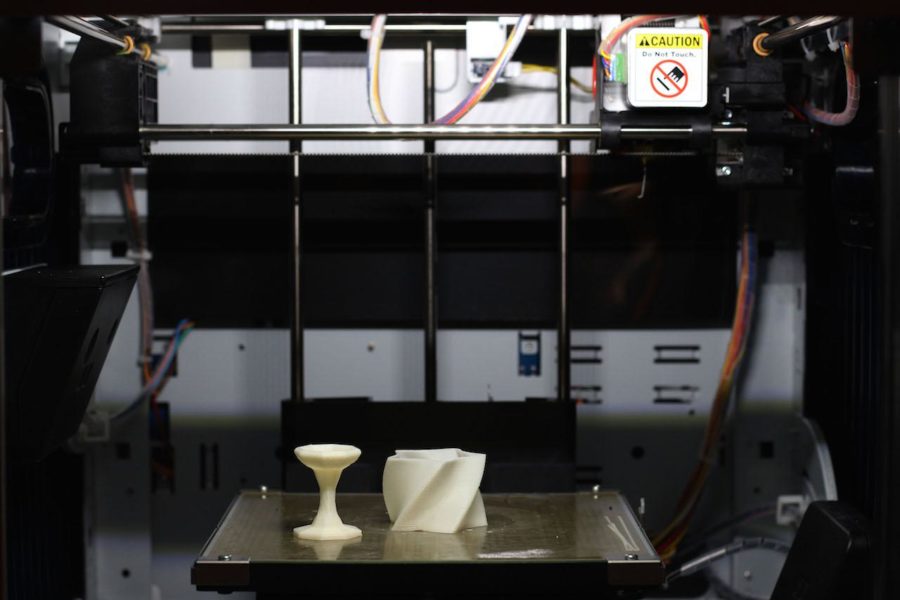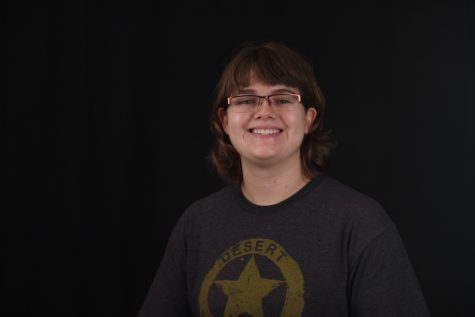Printing more than essays
Technology teacher Ray Cooper is utilizing his new 3-D printer in a variety of ways
Two objects created from designs downloaded from the internet sit inside the new 3D printer in Ray Cooper’s animation classroom.
May 19, 2016
Similar in appearance to a bulky industrial printer, animation teacher Ray Cooper’s new 3D printer has wowed students and teachers alike as it whirrs along, producing models built by students and intricate designs downloaded from the internet.
Brian Lidington, Introduction to Engineering and Design (IED) and robotics teacher, has had a 3D printer for a while now, and speaks highly of its many uses.
“We use it in Introduction to Engineering Design to print mock-ups of different parts they create,” Lidington said. “We have used it in aerospace to do custom parts for rockets and RC planes. Some kids have used it for other assignments in classes like history and English. We had a student make a part for a Ferris wheel, and a part that was Romeo from Shakespeare.”
Cooper said he plans to integrate the new printer into his Advanced Animation class next year.
“Right now the printer is out of filament, which is kind of like weedeater string,” Cooper said. “The goal is to able to integrate it into what we do in Advanced Animation. I’m going to figure that out this summer. I want everybody to be able to get their hands on it and the stuff we have been doing in Maya and to be able to model, then print.”
One of Cooper’s students, freshman Sam Oates, has even replaced a broken piece on his trumpet with a 3D printed piece.
“I took the measurements of my trumpet mouthpiece and made it by myself,” Oates said. “I had to fix the measurements some, but it works well. I think 3D printed mouthpieces are a wonderful idea.”
Other students like the addition of the 3D printer for career prep.
“It’s likely that I’ll be working with 3D printer in my profession, so it’s good to lean for hey work now rather than later,” junior Dylan Elkins said. “3D printing things is relatively simple: your model has to be airtight, then you export it to an STL file, which then load into the printers software and begin printing. That’s pretty much it.”




